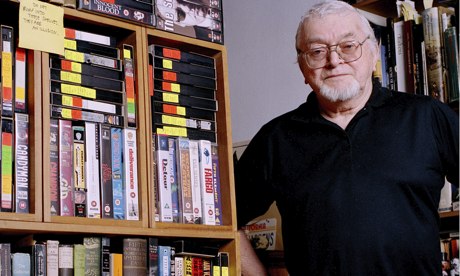
As I've written here before, I'm not much of a re-reader. Nor do I like the idea of reading for comfort: when I read I want to be challenged, unsettled, disorientated. Even with a stinking cold, a Lemsip and a roaring fire I would prefer to discover something (how odd that Anthony Trollope prefigured Logan's Run with The Fixed Period! Why hadn't I read Chris Adrian's superlatively good Gob's Grief when it first came out?) rather than revisit something. Nevertheless, there is one book which, when in gloomy moods and melancholy moments, I find myself picking up again and again. It's not – though it probably should be – the Book of Psalms, although I do find in, say, Psalm 51 a kind of resilience that is a supportive.
No; the book I pick up is Russell Hoban's The Mouse and His Child, first published in 1969. It was not a book I ever read as a child. Given that I loved books such as The Phantom Tollbooth and A Turnbull's Mr Never-Lost (my copy is now lost, and it seems difficult to track down; I would love to see if it accords with my memory of things like Seamus the Shadow, who was cut off with a farthing by his owner), it seems peculiar that nobody gave me a copy of it. I first read it after thrilling at Riddley Walker, and my charity-shop copy is now much-thumbed. Even the epigraph – four lines of Auden ("The sense of danger must not disappear:/ The way is certainly both short and steep,/ However gradual it looks from here;/ Look if you like, but you will have to leap" – is glorious. And then there's a map! I love a book with a map, even if it's The Sword of Shannara. Dump. Dolls' House. Church. Serpentina's Pond.
The Mouse and His Child is the story of two clockwork mice, a father and son joined together, who are bought at Christmas and discarded. They go on a quest to "become self-winding", while being pursued by the villainous Manny Rat. Along the way they encounter a Shrew War, meet a group of avant garde crow actors, The Caws of Art, performing C Serpentina's The Last Visible Dog ("Act One, Scene One" said a scratchy voice across the stream as the sun rose. "The bottom of a pond: mud, ooze, rubbish, and water plants." "That kills me", said a second, more resonant voice. "That is deep. That is the profoundest") and eventually the play's author. The title comes from a can of dog food, the label of which shows a dog carrying a can of said dog food, the label of which shows a dog carrying a can of said … you get the idea. Hoban's metaphysics for children still moves me. "Nothing," said the mouse child, "I can see nothing between the dots." "Nothing is the ultimate truth," replies the turtle author. But then the label peels away and the mouse child says triumphantly: "There's nothing on the other side of nothing but us."
With its wacky equations ("Key times winding equals go"; "Pond minus dam equals mud"; "Dog divided by how must equal why"), its blaring headlines with ironic import, and equal amounts of mischief and melancholy, it is a profound little book – the equal, in some ways, to the Alice books. Yet its moral and feeling is kindlier and sharper. As the plush elephant says at the end, "Do you remember how I sang you a lullaby when you were afraid of the great world outside the toyshop window? And yet, it was I who was afraid when I found myself alone in the world, and it was you and your papa who were brave and rescued me. I find that very pleasant to think about."
I find that both comforting and devastating.

